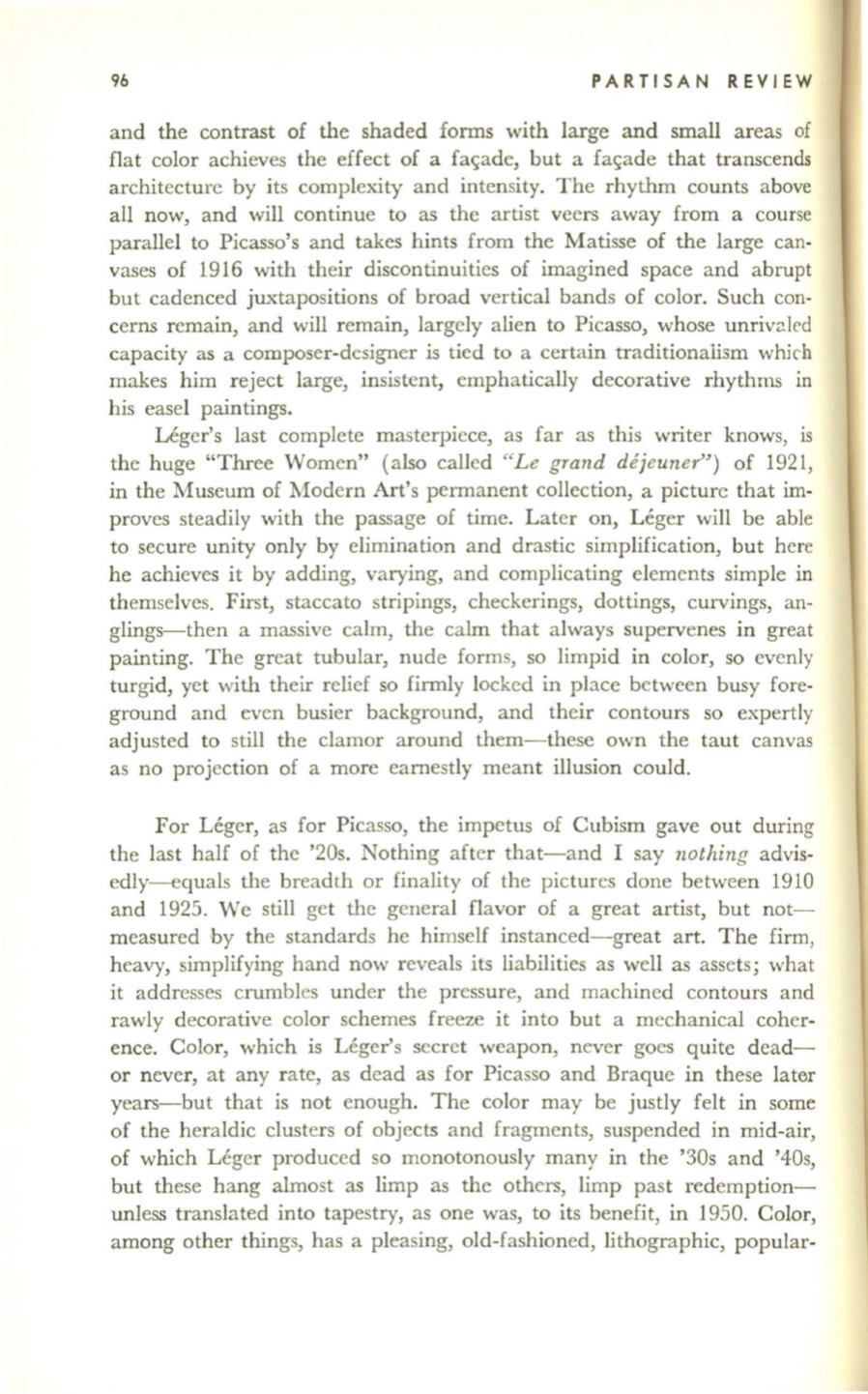
96
PARTISAN REVIEW
and the contrast of the shaded forms with large and small areas of
flat color achieves the effect of a fac;ade, but a fac;ade that transcends
architecture by its complexity and intensity. The rhythm counts above
all now, and will continue to as the artist veers away from a course
parallel to Picasso's and takes hints from the Matisse of the large can–
vases of 1916 with their discontinuities of imagined space and abrupt
but cadenced juxtapositions of broad vertical bands of color. Such
COD–
cerns remain, and will remain, largely alien to Picasso, whose unriv<J.lrd
capacity as a composer-designer is tied to a certain traditionalism whirh
makes him reject large, insistent, emphatically decorative rhythms
In
his easel paintings.
Uger's last complete masterpicce, as far as this writer knows, is
the huge "Three Women" (also called
aLe grand dejeuner")
of 1921,
in the Museum of Modern Art's permanent collection, a picture that
im–
proves steadily with the passage of time. Later on, Leger will be able
to secure unity only by elimination and drastic simplification, but here
he achieves it by adding, varying, and complicating elements simple in
themselves. First, staccato stripings, checkerings, dottings, curvings, an–
glings-then a massive calm, the calm that always supervenes in great
painting. The great tubular, nude forms, so limpid in color, so evenly
turgid, yet with their relief so firmly locked in place between busy fore–
ground and even busier background, and their contours so expertly
adjusted to still the clamor around them-these own the taut canvas
as no projection of a more earnestly meant illusion could.
For Leger, as for Picasso, the impetus of Cubism gave out during
the last half of the '20s. Nothing after that-and I say
nothing
advis–
edly--equals the breadth or finality of the pictures done between 1910
and 1925. We still get the general flavor of a great artist, but not–
measured by the standards he himself instanced-great art. The firm,
heavy, simplifying hand now reveals its liabilities as well as assets; what
it addresses crumbles under the pressure, and machined contours and
rawly decorative color schemes freeze it into but a mechanical coher–
ence. Color, which is Leger's secret weapon, never goes quite dead–
or never, at any rate, as dead as for Picasso and Braque in these later
years-but that is not enough. The color may be justly felt in some
of the heraldic clusters of objects and fragments, suspended in mid-air,
of which Leger produced so monotonously many in the '30s and '40s,
but these hang almost as limp as the others, limp past redemption–
unless translated into tapestry, as one was, to its benefit, in 1950. Color,
among other things, has a pleasing, old-fashioned, lithographic, popular-


